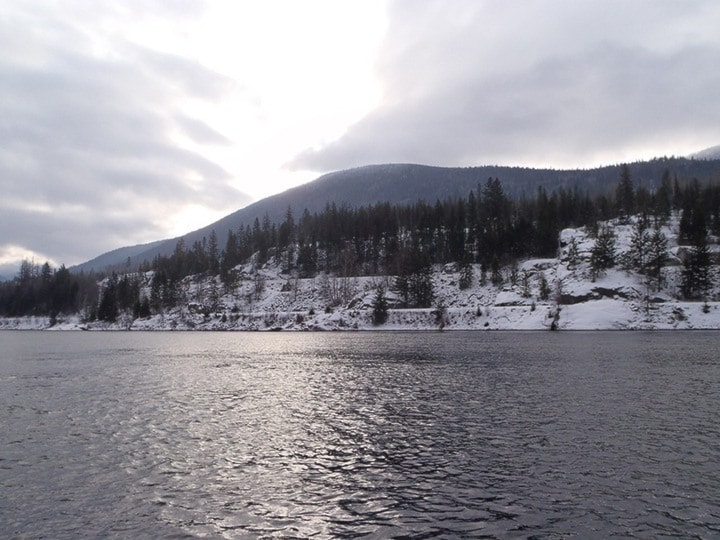Following the highest water levels on the Kootenay River in nearly 40 years, BC Hydro is beginning field work this week on dredging Grohman Narrows.
“There are a number of drivers for the project and a number of benefits if the project went ahead,” said local Hydro spokeswoman Mary Anne Coules.
Grohman Narrows, about three kilometres downstream of Nelson, restricts the river’s flow, which can result in flooding during high inflows into Kootenay Lake.
That was the case last year, when snowpack, rainfall and runoff conditions were much greater than normal and the lake peaked at 1,753.8 feet — its highest level since 1974. It prompted local governments to call on BC Hydro to widen Grohman Narrows to improve flood control. The Narrows was last dredged in the late 1930s.
“Part of the decision [to investigate dredging] was the feedback from local government and stakeholders,” Coules said. “We did hear them encourage us to look at it.”
The field work, expected to cost $70,000, will last about 10 days and consist of riverbed surveys to evaluate sediment and help determine if dredging is feasible.
The project’s first phase runs through October, looking at potential costs and benefits. Coules said based on the results of this year’s work, BC Hydro hopes to determine in early 2014 whether to move to the next phase of investigation. It could take another couple of years before a decision is made on channel improvements.
“We’re in very early stages,” Coules said. “We’re looking at whether we can even go ahead.”
If dredging is deemed viable, in addition to greater flood control, it’s expected to improve the flexibility of operating the Kootenay Lake system and expand power generation at downstream dams.
Coules said while the initial field work won’t require Crown permits or licenses, extensive consultation is planned with the public and other agencies operating on the Kootenay River, including FortisBC, Nelson Hydro, and the US Army Corps of Engineers. A FortisBC spokesman said while the project is in its early stages, the company supports the efforts.
Nelson city councillor Deb Kozak, who chairs the Columbia River Treaty local governments committee, also said she is feeling “really positive about it.” Kozak said it became a hot topic during last year's flooding and was added to the list of issues the committee brought to the provincial government. “It brought it into sharp relief that we needed to do something ... I'm glad they're going to study it.”
But while most people she has talked to at the community level want to see it happen, Kozak says a careful look at the environmental impact is essential. One consideration is fish habitat, which would require studies.
One Willow Point resident, whose home has suffered the effects of high water in recent years and who has previously called for dredging of the Narrows, said Hydro’s announcement is long overdue.
“It is about bloody time,” Jay McKimm said, adding that getting this far has been “ponderous” given the angst experienced in the last year.
He worries this year is shaping up to be similar to 2012, with late snow and heavy rain, and feels management of lake levels is too often a “guessing game.”
“I am pleased to hear our voices of concern can be heard,” he said. “Many people before me ventured a shout or two along the same lines.”
